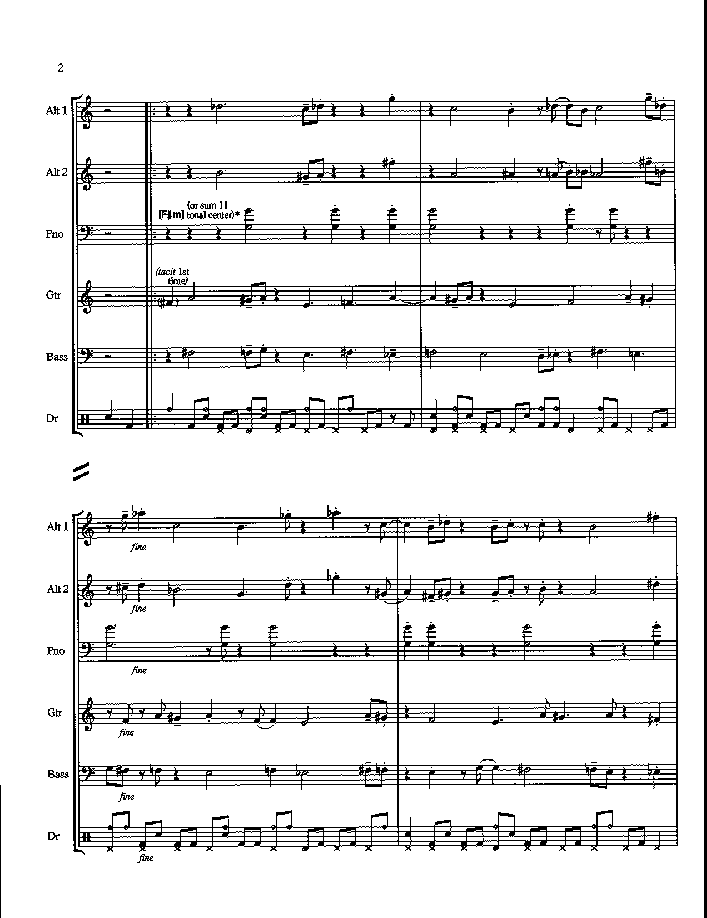From the album Black Science.
The notation for the drums is explained on this diagram.
Melodically and harmonically the concept of “Cross-Fade” deals with tonal centers in terms of space (as opposed to the standard tonality which deals in key centers). In other words what is important here is the position of tones in space or distance. So when I speak of improvising with regard to a “sum 11 tonal center” I am speaking of a tonality that has an axis (or spatial center) of sum 11. Sum 11 means that the tones B-C (also F-G flat) are the spatial tonal centers of this section of the composition. For the improviser this means improvising with this spatial tonality in mind. To go into some examples of improvising in a “sum 11” tonality is beyond the scope of this presentation and any would take many chapters. I do plan on releasing a small book on the subject later but I can say that one necessity would be learning how to think spatially with the mind as well as using you ears. For those musicians who just don’t want to deal with all of this I’ve also written a more traditional tonality (F sharp minor) which can be substituted but this is not what I had in mind when creating the song, it is only a worst case substitute. If you use the sum concept you will be closer to the melodic material in the composition (and the concept in general).
The reason for the term “sum” comes from the concept of adding note numbers. If tones C through B chromatically are represented by the numbers 0 through 11 respectively, then it is possible to “add” tones together and come up with sums. The sums represent the axis (or center point) between the two tones being added together. For a “sum 8” axis, any two tones that add up to the number 8 would be considered a sum 8 interval. For example D sharp and F (3+5) would add up to 8. The center (or axis) of D sharp and F is E and E (which is also sum 8 or 4+4, an axis always implies at least four tones, in this case the E unison represents two tones but if thought of from another perspective B flat and B flat is also the axis, i.e. 10+10=20 minus 12 = 8), the same goes for C sharp and G (also sum 8). So the axis of a “sum 11” interval would be B and C (Since we are dealing with 12 tones the whole system is based on 12, so you can continually subtract the number 12 from any sum that is 12 or greater until the sum is below 12). This may be a little confusing but anything unfamiliar is confusing at first, with a little work it can be as natural as any other learned system.
To keep your balance rhythmically also requires developing a sense of spatial placement. This is not unlike being able to feel where the bridge is in say changes based on the song “I Got Rhythm” which many players have learned how to do (through repetition, doing and hearing). The same concepts can be applied here but it is necessary to hear and play the rhythms many times to learn this sense of balance. Start by learning the drum chant (basic drum part)
The song can be played with any two instruments playing the melody instead of two saxophones.


